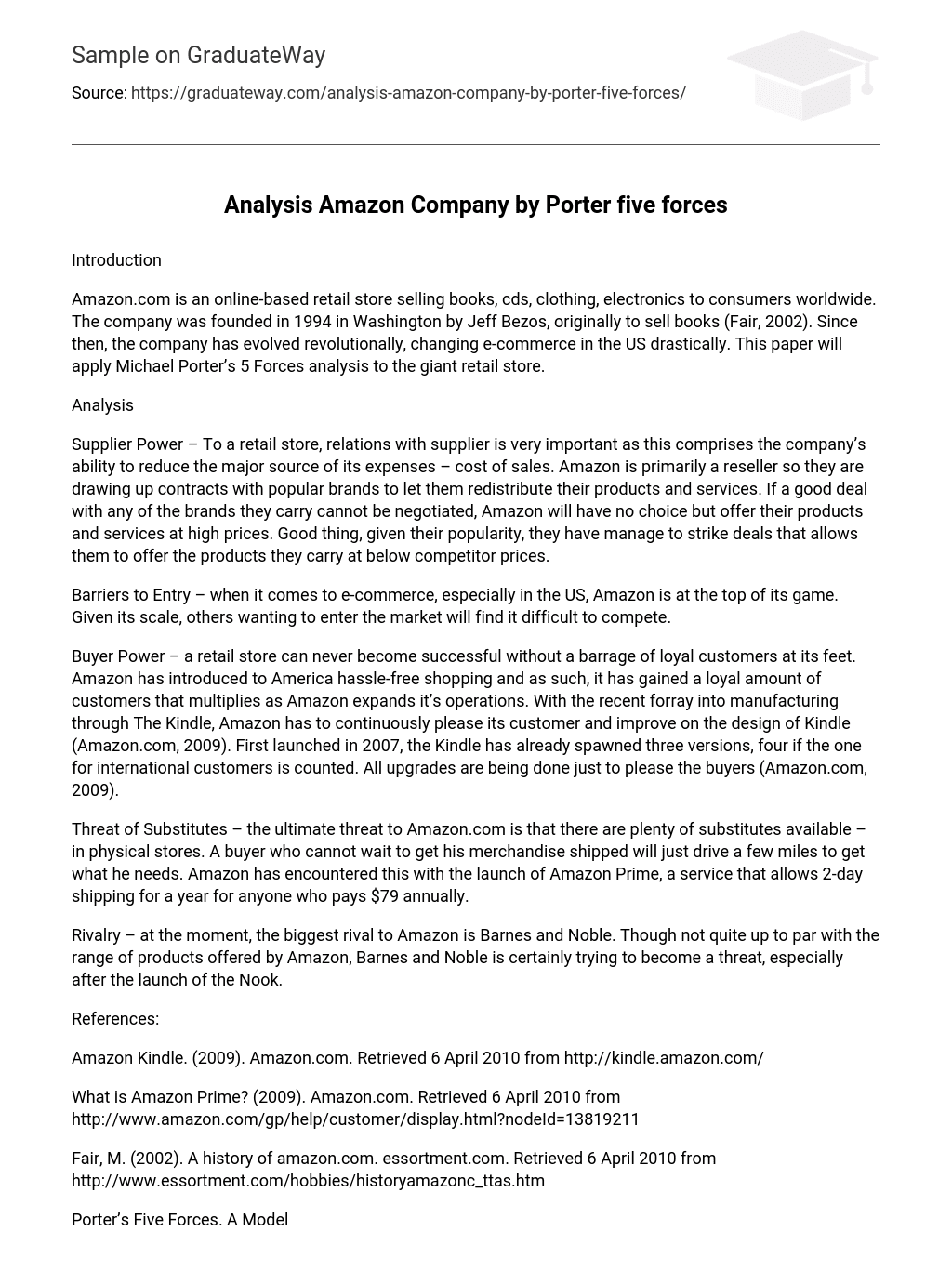Introduction
Amazon.com is an online-based retail store selling books, cds, clothing, electronics to consumers worldwide. The company was founded in 1994 in Washington by Jeff Bezos, originally to sell books (Fair, 2002). Since then, the company has evolved revolutionally, changing e-commerce in the US drastically. This paper will apply Michael Porter’s 5 Forces analysis to the giant retail store.
Analysis
Supplier Power – To a retail store, relations with supplier is very important as this comprises the company’s ability to reduce the major source of its expenses – cost of sales. Amazon is primarily a reseller so they are drawing up contracts with popular brands to let them redistribute their products and services. If a good deal with any of the brands they carry cannot be negotiated, Amazon will have no choice but offer their products and services at high prices. Good thing, given their popularity, they have manage to strike deals that allows them to offer the products they carry at below competitor prices.
Barriers to Entry – when it comes to e-commerce, especially in the US, Amazon is at the top of its game. Given its scale, others wanting to enter the market will find it difficult to compete.
Buyer Power – a retail store can never become successful without a barrage of loyal customers at its feet. Amazon has introduced to America hassle-free shopping and as such, it has gained a loyal amount of customers that multiplies as Amazon expands it’s operations. With the recent forray into manufacturing through The Kindle, Amazon has to continuously please its customer and improve on the design of Kindle (Amazon.com, 2009). First launched in 2007, the Kindle has already spawned three versions, four if the one for international customers is counted. All upgrades are being done just to please the buyers (Amazon.com, 2009).
Threat of Substitutes – the ultimate threat to Amazon.com is that there are plenty of substitutes available – in physical stores. A buyer who cannot wait to get his merchandise shipped will just drive a few miles to get what he needs. Amazon has encountered this with the launch of Amazon Prime, a service that allows 2-day shipping for a year for anyone who pays $79 annually.
Rivalry – at the moment, the biggest rival to Amazon is Barnes and Noble. Though not quite up to par with the range of products offered by Amazon, Barnes and Noble is certainly trying to become a threat, especially after the launch of the Nook.
References:
Amazon Kindle. (2009). Amazon.com. Retrieved 6 April 2010 from http://kindle.amazon.com/
What is Amazon Prime? (2009). Amazon.com. Retrieved 6 April 2010 from http://www.amazon.com/gp/help/customer/display.html?nodeId=13819211
Fair, M. (2002). A history of amazon.com. essortment.com. Retrieved 6 April 2010 from http://www.essortment.com/hobbies/historyamazonc_ttas.htm
Porter’s Five Forces. A Model for Industry Analysis. (n.d.). Quick MBA. Retrieved 6 April 2010 from http://www.quickmba.com/strategy/porter.shtml





